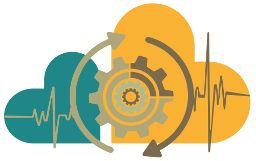Workflows
What is a Workflow?Filters
Summary
The PPI information aggregation pipeline starts getting all the datasets in GEO database whose material was generated using expression profiling by high throughput sequencing. From each database identifiers, it extracts the supplementary files that had the counts table. Once finishing the download step, it identifies those that were normalized or had the raw counts to normalize. It also identify and map the gene ids to uniprot (the ids found usually ...
Summary
This pipeline has as major goal provide a tool for protein interactions (PPI) prediction data formalization and standardization using the OntoPPI ontology. This pipeline is splitted in two parts: (i) a part to prepare data from three main sources of PPI data (HINT, STRING and PredPrin) and create the standard files to be processed ...
Summary
The validation process proposed has two pipelines for filtering PPIs predicted by some IN SILICO detection method, both pipelines can be executed separately. The first pipeline (i) filter according to association rules of cellular locations extracted from HINT database. The second pipeline (ii) filter according to scientific papers where both proteins in the PPIs appear in interaction context in the sentences.
The pipeline (i) starts extracting cellular component annotations from ...
Summary
PredPrIn is a scientific workflow to predict Protein-Protein Interactions (PPIs) using machine learning to combine multiple PPI detection methods of proteins according to three categories: structural, based on primary aminoacid sequence and functional annotations.
PredPrIn contains three main steps: (i) acquirement and treatment of protein information, (ii) feature generation, and (iii) classification and analysis.
(i) The first step builds a knowledge base with the available annotations ...
Run baredSC in 1 dimension in logNorm for 1 to N gaussians and combine models.
Automated inference of stable isotope incorporation rates in proteins for functional metaproteomics
Summary
HPPIDiscovery is a scientific workflow to augment, predict and perform an insilico curation of host-pathogen Protein-Protein Interactions (PPIs) using graph theory to build new candidate ppis and machine learning to predict and evaluate them by combining multiple PPI detection methods of proteins according to three categories: structural, based on primary aminoacid sequence and functional annotations.
HPPIDiscovery contains three main steps: (i) acquirement of pathogen and host proteins ...
This Galaxy workflow takes a list of tumor/normal sample pair variants in VCF format and
- annotates them using the ENSEMBL Variant Effect Predictor and custom annotation data
- turns the annotated VCF into a MAF file for import into cBioPortal
- generates human-readable variant- and gene-centric reports
The input VCF is expected to encode somatic status, somatic p-value and germline p-value of each variant in varscan somatic format, i.e., via SS, SPV and GPV INFO keys, respectively.
The workflow takes a trimmed HiFi reads collection, Forward/Reverse HiC reads, and the max coverage depth (calculated from WF1) to run Hifiasm in HiC phasing mode. It produces both Pri/Alt and Hap1/Hap2 assemblies, and runs all the QC analysis (gfastats, BUSCO, and Merqury). The default Hifiasm purge level is Light (l1).
The ultimate-level complexity workflow is one among a collection of workflows designed to address tasks up to CTF estimation. In addition to the functionalities provided by layer 0 and 1 workflows, this workflow aims to enhance the quality of both acquisition images and processing.
Quality control protocols
…
Combination of methods
- CTF consensus
- New methods to compare ctf estimations
- CTF xmipp criteria (richer parameters i.e. ice detection)
Advantages:
- Control of ...
 Tests
Tests